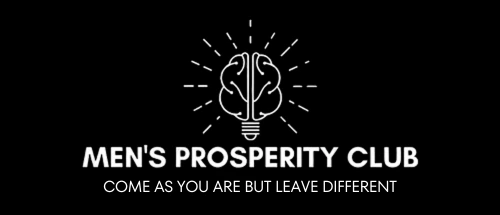The silent struggle for men’s mental health in the United Kingdom is a growing crisis, with men accounting for around 75% of all suicides. Whilst awareness of mental health issues has increased significantly over recent years, men continue to face unique barriers when it comes to seeking help and support.
Depression affects approximately 1 in 8 men in the UK during their lifetime. Yet, studies show that men are far less likely to seek professional help compared to women. Research by the Mental Health Foundation indicates that only 36% of referrals for psychological therapy in the UK are for men. This reluctance is driven by deeply ingrained societal stigma and traditional masculine expectations. Additionally, 40% of men feel too embarrassed to reach out for professional mental health support, underscoring the urgency of breaking this silent struggle.
This complete piece explores the complex world of men’s mental health. It explains the barriers that keep men quiet and provides practical ways to break this silence. The text covers everything related to this pressing health issue, from common challenges to finding support systems that work.
The Hidden Cost of Silence: Understanding Men’s Mental Health Crisis
Men’s mental health crisis has reached alarming proportions. Two in five men deal with worry or low mood regularly. This silent struggle appears differently in various aspects of society. It creates a complex web of challenges that needs immediate attention.
Current statistics and trends
77% of men have experienced common mental health conditions like anxiety, stress, or depression, according to recent studies. The number of men with suicidal thoughts during periods of worry or low mood has doubled to 10% in recent years. Men are now three times more likely to see a therapist than in previous years, as mental health services report.
The impact of cultural expectations
Traditional masculine values still shape men’s approach to mental health. Boys learn to embody stoicism, strength, and emotional resilience early. 40% of men have never talked to anyone about their mental health, while 29% feel too embarrassed to do so. Society’s pressure to “man up” and hide vulnerable emotions creates a rigid masculinity model that restricts authentic expression.
Economic and social consequences
Mental health challenges create staggering economic costs. These problems cost the UK economy £117.9 billion annually – about 5% of GDP. Most costs come from:
- Lost productivity in the workplace
- Informal care responsibilities
- Healthcare services
- Social support systems
Workplaces lose £43.1 billion annually through staff turnover and £41.8 billion from reduced productivity. Businesses face costs of £101 billion, while government spending reaches £25 billion annually.
Social consequences go beyond money. Only 34% of men talk about their problems with friends, compared to 52% of women. This isolation often leads to increased substance abuse. Men are twice as likely as women to drink hazardously.

Unmasking the Silent Struggle: Common Mental Health Challenges
Men face unique mental health challenges that often hide behind physical symptoms and behavioural changes. Research shows that men who experience depression show different symptoms from women, especially in how they deal with emotional distress.
Depression and anxiety manifestations in men
Men who suffer from depression tend to show physical symptoms instead of emotional ones. These symptoms include:
- Chest tightness and racing heart
- Digestive problems and unexplained pain
- Hormonal issues and sexual dysfunction
- Headaches and persistent fatigue
- Sleep disturbances and weight changes
Research shows that men are twice as likely to develop depression after relationship breakdowns. Anxiety in men often shows up as irritability, anger outbursts, and problems with concentration.
Workplace stress and burnout
Burnout has become a major challenge, with 32.24% of men facing severe burnout compared to 25.97% of women. Male professionals show higher cynicism and emotional exhaustion rates, especially when they face job insecurity or career stagnation.
Workplace stress can harm mental health in many ways. Men who experience burnout show increased rates of depression (21.81%) and anxiety (29.16%). These numbers are higher than those seen in women, which points to a worrying trend in professional settings.
Relationship impacts and isolation
Relationship problems create another crucial aspect of men’s mental health challenges. Research indicates that marital separation makes men four times more likely to attempt suicide. Men who struggle with relationship problems often minimise their issues, which makes their relationships worse and leaves them more isolated.
Mental health conditions can reduce a person’s ability to interact socially, and many men pull away from family and friends. Studies show that low mood often causes social withdrawal because men worry others might see them as “weak” or “unreliable“. Despite that, this isolation creates a cycle where loneliness makes mental health symptoms worse, especially for middle-aged men.
Cultural Barriers and Traditional Masculinity
Men still face pressure from traditional masculinity norms about mental health. These norms create real barriers when they need support. Research shows that eight out of ten men must maintain a strong, stoic image. This creates an ongoing cycle of silence about mental health challenges.
Societal expectations and stereotypes
Traditional male norms emphasise being tough, controlling emotions, and handling things alone. Men who show vulnerability or ask for help often face harsh judgment. Research shows men avoid talking about their problems to protect themselves from stigma, especially at work. 40% of men have never talked about their mental health with anyone.
Generational perspectives on mental health
Different age groups view mental health differently. Baby Boomers show more resilience when dealing with mental health issues—their life experiences through various challenges shaped this outlook. Younger people understand mental health better, but they deal with their own set of pressures. Gen Z and Millennials report much higher levels of mental distress. 44.5% of Gen Z and 35.8% of Millennials experience major depression symptoms.
Cultural variations in mental health stigma
Culture plays a big role in how different communities view mental health stigma. Face saving and family values stand out in many cultures:
- Mental illness often affects family honour in East Asian cultures. This adds stress for both the person and their family
- Latin American communities feel extra pressure from values like ‘machismo’ that expect men to be strong and stoic
- Arab cultures show high levels of shame about mental health issues. Traditional values often stop people from getting help
Military and male-dominated jobs face special challenges. Their tough culture discourages showing emotions. Sports environments promote mental toughness and staying stoic, making it harder to ask for help.
These issues go beyond personal suffering. Work culture in male-dominated industries pushes men to put work before their wellbeing. This leads to more isolation and makes men less likely to get professional help. Studies show men make up only 20% of people using mental health services in some areas.

The Digital Age Impact on Men’s Mental Health
The digital world has changed how men get mental health support, bringing new challenges and opportunities. People spend about 151 minutes daily on social media platforms like Instagram and Facebook, which have become part of our everyday routine.
Social media pressure and comparison
Social media shows carefully selected snapshots of life that encourage constant comparison and harm mental wellbeing. Studies show that heavy digital media users see others as happier, healthier, and more successful than themselves. This view gets stronger because of social media’s positivity bias, where users share only their best moments online.
These comparisons lower self-esteem and increase depression rates. Extended exposure to perfect-looking content damages self-image and mental health. Screen time shot up after COVID-19 hit, which made these problems worse.
Online communities and support networks
Digital platforms have become essential in creating safe spaces where men can access mental health support. The Mens Prosperity Club and similar online initiatives empower men to connect and share experiences in judgement-free environments.
Online support communities are a great way to get help because they offer:
- Anonymous participation reduces the stigma
- Peer-to-peer connections with shared experiences
- Professional moderation ensures safe environments
Digital wellness tools and resources
Digital mental health tools have revolutionised support access. Virtual therapy, mindfulness apps, and text-based counselling make mental health care more available. These options work well for men who might not want face-to-face support.
Men respond well to digital platforms for getting help. Research shows that 76% of men want to use technology to improve their health and wellbeing. COVID-19 pushed this trend further, causing a 200% increase in mental health app usage.
Modern wellness resources include AI-powered services, voice recognition technology, and customised support systems. These innovations give men private, easy-to-access options to manage their mental health and break down traditional barriers to seeking help.
Breaking Through the Silence: Recognition and Early Intervention
Spotting early warning signs of mental health challenges is vital to provide timely help and support. Studies show that 50% of mental illness begins by age 14, and three-quarters show up by age 24.
Warning signs and symptoms
Men’s mental health concerns often show through physical and behavioural changes. Here are the main warning signs:
- Changes in mood, energy level, or appetite that you can notice
- More anger, irritability, or aggressive behaviour than usual
- Problems with sleep – either too much or too little
- Headaches or digestive issues that don’t go away
- Taking unnecessary risks and misusing substances
- Pulling away from friends, family, and social activities
Risk factors and triggers
Men face several factors that raise their risk of mental health challenges. White men aged 85 and above have the highest suicide risk. The workplace puts a lot of pressure on men, and construction workers face suicide rates four times higher than other industries.
Money problems, legal issues, and relationship breakdowns make men more vulnerable. Men going through divorce or separation face higher risks, and their depression becomes more severe during these times.
Prevention strategies
Getting help early works well to reduce the severity of symptoms. Workplace programmes focusing on mental fitness through strength, flexibility and endurance have shown great results. These programmes include ways to handle stress, which work in 92% of cases studied.
Mental health support works best when offered in places where men usually gather. These programmes help lower depression, anxiety, and stress levels while boosting emotional health. The most successful approaches consider men’s specific needs and priorities.
Studies show men respond well to support that fits their priorities and is easy to access. Workplace support, like wellness rooms and private spaces for conversations, makes a big difference. A case study revealed that nearly 25% of workers used these facilities within three months of their establishment.

The Role of Support Systems
Support networks are crucial to tackle men’s mental health challenges. Research shows that men with strong social connections have better mental health outcomes. Men who have fewer friends in their close and extended networks show more signs of depression.
Family and friend dynamics
The ways men connect socially are more complex than previously thought. This challenges old views that saw men’s relationships as just practical. Men participating in group activities are more satisfied with their friendships and feel less lonely.
Recent trends in male friendships raise concerns. Only 27% of men had at least six close friends in 2021, down from 55% in 1990. Close friendships between men, known as ‘bromances,’ can be more rewarding than romantic relationships. Men often feel their male friends understand them better.
Workplace support structures
Getting help early at work can save lives for men with poor mental health. Workplace programmes have shown great benefits. These include:
- Quick spotting and treatment of conditions
- Better staff retention
- Lower burnout rates
- Better motivation and productivity
The Chartered Institute of Personnel and Development’s research reveals mental ill health leads to extended absences. 63% of employers say it’s the main reason staff stay off work for more than four weeks. Workplace stress causes long-term absence in 37% of businesses.
Professional networks
Professional support networks have adapted to what men need. The Men’s Shed movement and peer-led support groups help boost participants’ self-esteem. Digital platforms now connect men with professional resources. 76% of men are open to using technology to improve their health.
Research shows peer-led men-only groups boost self-esteem and help men open up about their vulnerabilities. Mentell provides free, confidential spaces where men aged 18 and above can talk without judgement. ManHealth helps men through mental and physical health difficulties. They offer workshops and training to enable businesses and create change.
The ALEC approach (Ask, Listen, Encourage Action, Check In) helps support men who might be struggling. This method focuses on spotting behaviour changes and keeping regular contact. It encourages professional help when needed. Research shows that men who get steady support from their networks are more likely to seek professional help when needed.
Transforming Mental Health Conversations
Mental health discussions need thoughtful approaches and well-designed environments. Research shows that 40% of men have never talked to anyone about their emotional wellbeing.
Creating safe spaces for dialogue
Safe spaces are vital elements that encourage mental health discussions. The physical environment makes a big difference—quiet places with relaxed atmospheres help people open up more easily. Walking together or sharing new experiences builds stronger bonds and creates trustworthy environments.
Workplaces are ideal settings for mental health dialogue. Studies show supportive environments with work-life balance and stress management programmes deliver great results. Dedicated wellbeing rooms and private conversation spaces have made a positive difference, with 25% of the workforce using them within three months.
Language and communication strategies
The ALEC model works well to encourage meaningful conversations about mental health:
- Ask open-ended questions about daily life
- Listen actively without interruption
- Encourage action and support-seeking
- Check in regularly to maintain a connection
Men tend to prefer solution-focused approaches when talking about mental health. Research shows that messages highlighting positive traits—such as taking action and responsibility—appeal more to male audiences. Avoiding phrases like “man up” or “be a real father” helps prevent additional harm to mental wellbeing.
Building trust and openness
Building trust takes patience and consistency. Studies show that some men avoid sharing feelings because of past betrayals. Regular interaction and shared activities build the foundation for deeper conversations.
Men’s groups have been particularly successful at building trust and openness. These communities offer spaces where men can discuss topics they might find difficult elsewhere. Research indicates that 76% of men are open to using technology to improve their health, suggesting digital platforms can add value to traditional support methods.
Shame-free environments work better than traditional approaches. Studies reveal that men respond better to pressure-free conversations. The focus moves to seeing vulnerability as a strength, showing that asking for help takes courage rather than showing weakness.

Future Perspectives: Changing the Narrative
Technology opens new frontiers in treatment and support as mental health care innovations change how society deals with psychological wellbeing. Mobile devices and digital platforms create unprecedented opportunities for mental health care and data collection.
Emerging mental health approaches
Mental health treatment keeps evolving with promising developments in traditional and new approaches. Mental health apps and digital platforms show remarkable potential. These platforms offer several benefits:
- Round-the-clock availability
- Anonymous participation reduces the stigma
- Lower cost compared to traditional care
- Better reach to remote populations
- Consistent treatment programmes
- Better data collection capabilities
Self-management apps help people set medication reminders and access tools to manage stress, anxiety, and sleep problems. People with serious mental illnesses benefit from cognitive remediation applications that improve thinking skills and address unhelpful thought patterns.
Policy and institutional changes
Healthcare systems show momentum in institutional reforms. The NHS has expanded its talking therapies and perinatal mental health support and implemented 24/7 crisis services. These changes show a growing awareness of men’s unique mental health needs.
Research shows that 76% of men want to use technology to improve their health. Healthcare policies now emphasise digital integration. The National Institute for Health Research (NIHR) and UK Research and Innovation (UKRI) invest in world-class mental health research.
Policymakers focus on these key areas:
- Services based on male-specific approaches
- Representative mental health workforces
- Youth services rebuilt after austerity

Technology and innovation in mental health
Digital transformation changes how mental health care reaches people. Skill-training apps feel like games and help people develop new coping mechanisms. These innovations give discrete, available options to manage mental wellbeing.
Artificial intelligence and machine learning enable:
- Early detection of distress signals
- Pattern identification in behaviour
- Prediction of critical mental health events
Wearable devices now monitor physical and mental health indicators. They provide real-time feedback and personalised support. The NIMH has awarded over 400 grants for technology-enhanced mental health interventions, which shows substantial investment in digital solutions.
E-mental health (eMH) interventions help address healthcare access inequities. These digital solutions match men’s priorities and needs and reduce barriers to care. To ensure programme success, these interventions need careful co-design with target populations.
Mental health care’s future combines traditional approaches with technological innovations. The NHS plans to give 900,000 more people access to alternative support methods through social prescribing by 2023/24. These developments and emerging digital tools create a complete framework to address men’s mental health challenges over the next several years.

Breaking the Silence: A Path to Better Men’s Mental Health
Men face a mental health crisis that we can’t ignore anymore. Statistics show that 77% of men deal with common mental health conditions. Traditional masculine expectations create barriers, but digital platforms, workplace support systems, and changing cultural attitudes bring positive shifts.
Professional support networks, peer groups, and digital wellness tools give men several paths to improve their mental health. These resources are available anonymously and match men’s priorities when they ask for help. Online communities supporting over 4,500 men weekly show how mental health discussions have become more accepted.
The Men’s Prosperity Club’s Walk & Talk Event lets men connect and share their experiences without judgment. This makes taking that vital first step toward better mental health easier.
Better mental health outcomes show up in men who keep strong social connections and get help from support systems. Families, workplaces, and communities must work together to break the silence around mental health. Safe spaces for open dialogue, workplace support structures, and state-of-the-art solutions will help change how we talk about men’s mental health.




